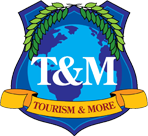Half the Fun of Being There Is Getting There
March 2008
Once upon a time, the old saying “half the fun of being there is getting there” used to be tru. Our visitors and clients used to see the trip as exciting, fun, and filled with romance. Unfortunately this no longer holds true. Tourists and visitors must deal with high fuel prices, irregular air schedules, poor and rude service, and a general sense that perhaps the best vacation or trip is to one’s local park or backyard. While attractions, hotels, and restaurants cannot be blamed for traffic jams, inconsistent airport security, weather delays, and rude service on trains, buses, and airplanes such travel hassles cannot help but impact the visitor industry. The first signs of this state of travel ennui are being felt throughout the industry. Some hotel and restaurant employees report greater hostility on the part of the traveling public.
More and more people are seeing getting there as an obstacle course instead of a pleasurable experience. Indeed, complaining about the rigors of travel, just as complaining about the weather, has become almost a universal pastime. Unlike the weather, however, we in the travel industry can teach our visitors and clients how to take preventative measures to lessen the harshness of the modern travel world. The bottom line is that no matter what part of the tourism industry to which you belong, the transportation hassles are bound to impact you. For this reason everyone who works in the travel and tourism industry needs to become a “travel counselor”, that is someone who is savvy in the ways of travel and when needed can give basic travel advice to road weary visitors and clients. It is in this light that Tourism Tidbits passes on these travel tips. Here are a travel tips to ease your clients’ travel burdens and also your own.
- Get a good medical check-up and take your medicines. If you travel often, make sure your doctor knows and get the name of a physician in the place(s) you plan to visit. Make sure that you carry in a separate place the names of all medications that you take, and list any allergies that you may have. Also program your doctor’s telephone number into your cell phone so that in case of emergency your local doctor can be easily contacted.
- Pack lightly and never place valuables, documents, such as a passport, or money in a suitcase. Never use a fanny-pack, they are signs for pickpockets that you are a visitor who can be taken advantage of. Simplify your travel wardrobe by combining colors. Men can change their appearance often by simply changing the color of their tie. Women can use scarves and belts to create new looks with less “baggage schlepping”. Remember most people expect travelers to be travelers and not fashion models. If you cannot afford to lose it, then do not take it. Most people take too much and often carry with them things that will be hard to replaced. If the object has sentimental value to you, then leave it home. Substitute faux jewelry for real jewelry, and never leave expensive electronics in places where these can be seen. A simple rule of thumb is pack what you need calculate how much money you will need, then halve your travel items and double your money.
- Watch your diet. Not only should you eat foods that are high in anti-oxidants, but try to eat only half of restaurant portions. Whenever possible carry meal-bars with you. These meal bars are an easy way to control food costs and usually offer better-balanced meals with less calories than many other alternatives. Because breakfast is the most important meal of the day, staying in hotels that offer free breakfasts encourages travelers to eat breakfast. Keep high sodium and high fats to a minimum, bring food from home whenever possible, and remember that carbonated beverages, caffeine and liquor tend to dehydrate the body during flights.
- Ask yourself which form of transportation fits your needs best. If the trip is less than 5 hours, consider driving instead of flying. By the time you get to the airport, go through security lines and actually get to where you are going, most trips that are less than five hours are faster by car than by plane. You can also avoid the hassle of worrying about taking liquids of less than 3ozs. When driving, just as in flying take a break every two hours.
- If you must fly, buy tickets about 6 weeks out and look for internet deals. Often you can save money by going to an airport just a bit out of the way. If you are on a long flight (over 5 hours) and have the time and patience, consider flights with multiple legs (stops) rather then direct flights. If you decide to use multiple legs for your travel plans, whenever possible make sure you give yourself at least 90 minutes to transfer from one flight to another. Airlines use the word, “legal connection.” This word makes no sense. It is not a question of legality but of do-ability! If you are on a leisure trip, try to avoid those times when business travelers are flying. Prices tend to be more expense at these times.
- Make sure that someone who will not be traveling with you has access to your home and a copy of your documents. Leave a copy of your documents (passports and drivers licenses) with that person so that in case someone steals your documents, a photocopy can be faxed to you. Also make sure to leave your travel itinerary with a trusted friend or relative. Things can go wrong not only when on a trip but also at home. Knowing how to locate you makes life easier not only for those who are traveling, but also for those who are at home.



